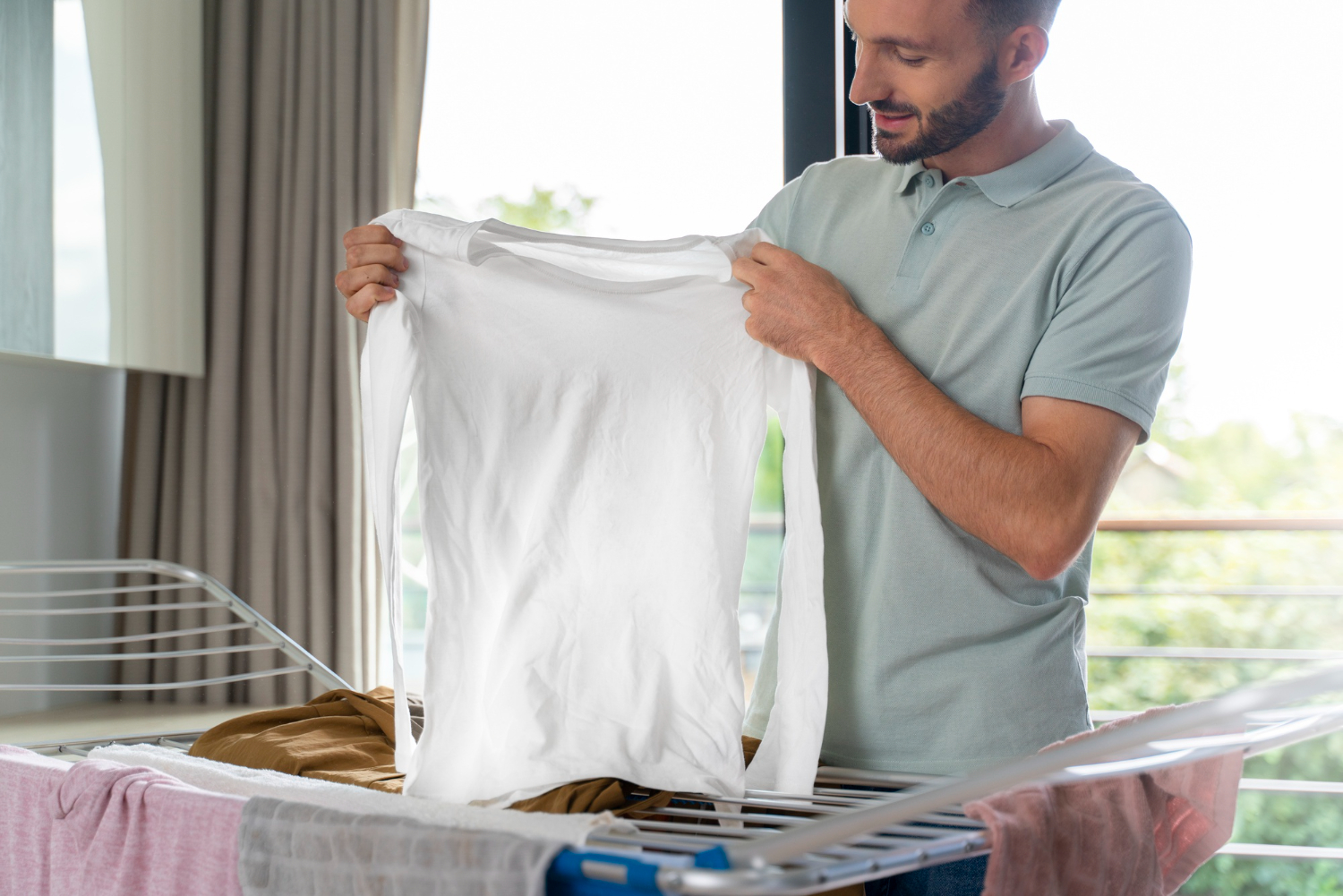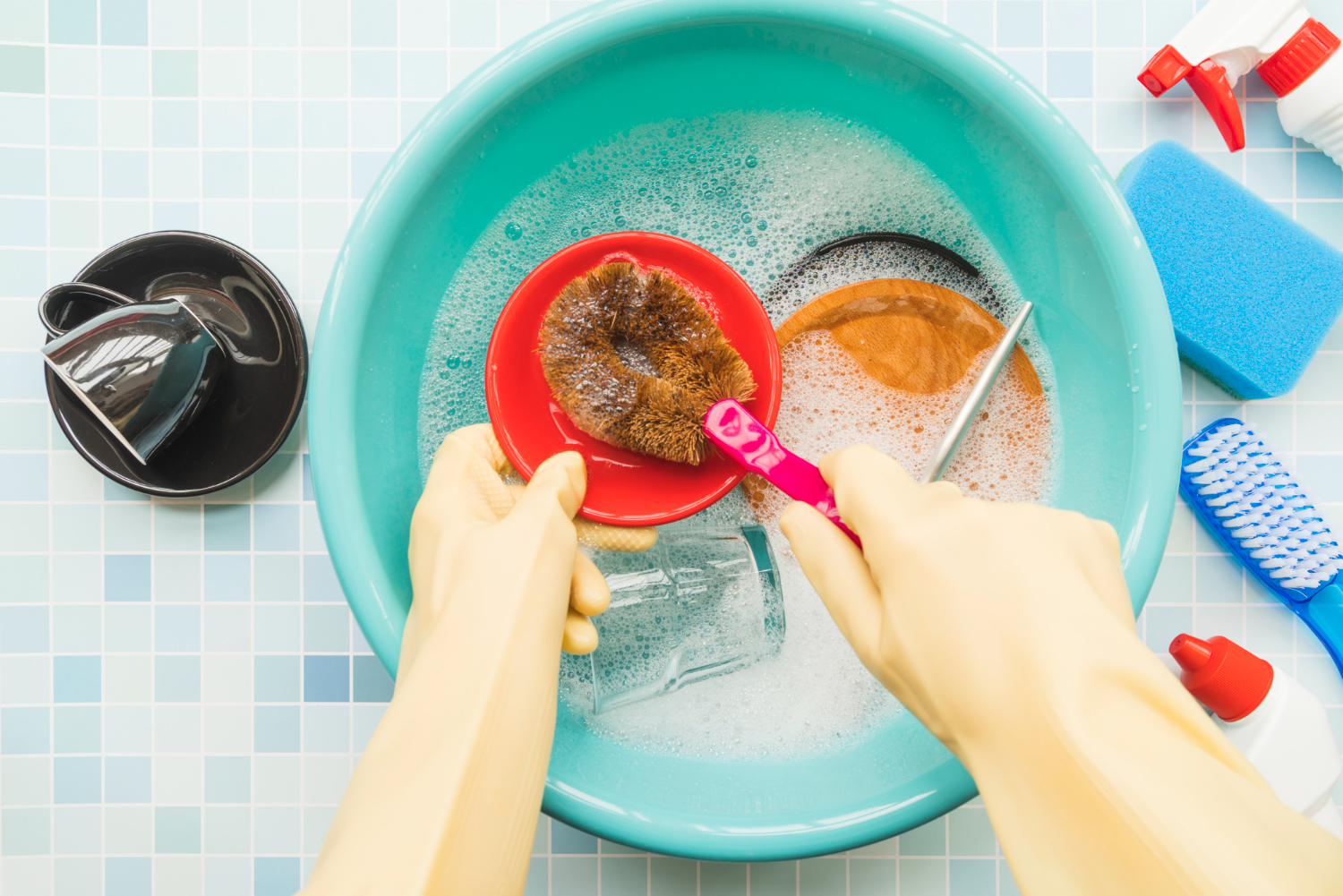Understanding Lint: What Causes It?
How to remove lint from clothes? Lint, those clinging nuisances on our clothes, whether from the fabric itself or external sources like dust, is a common bother in maintaining a neat appearance. Understanding its origins is key to effective removal. It impacts garment quality and requires tailored techniques for surface and embedded lint.
From simple lint rollers to precision fabric shavers, the right tools matter. We’ll explore removal methods and preventive steps to keep clothes pristine. Join us as we decipher lint, master its removal, and preserve immaculate clothing for days to come.
Types of Lint
1. Surface Lint
Surface lint is the visible accumulation of fibers and debris that rests prominently on clothing. Typically, it doesn’t embed deeply into the fabric and is relatively easy to remove. This type of lint is often noticeable and can be swiftly dealt with using simple removal techniques like brushing or using a lint roller.
2. Embedded Lint
Conversely, embedded lint presents a more difficult scenario. The fibers of the cloth entangle these tiny particles, making their removal a laborious process. Conventional removal techniques, like as brushing or lint roller rolling, frequently don’t work. As an alternative, specialist instruments such as fabric shavers or laborious hand methods are required to loosen and get rid of these stubborn particles.
Tools for Lint Removal: Essential Instruments
1. Lint Rollers
How to remove lint from clothes: With their sticky sheets, lint rollers are an essential tool for effectively collecting surface lint and loose fibers from garments. They are a go-to for quick and simple removal without causing harm to the fabric because of their simplicity and efficacy. These rollers come in a variety of sizes for convenience and are especially useful for routine maintenance.
2. Fabric Shavers
Fabric shavers, also known as lint shavers or fuzz removers, are specialized devices designed to eliminate embedded lint and fuzz from garments. They feature rotating blades or mesh screens that gently trim away the stubborn particles without harming the fabric. Ideal for reviving the appearance of sweaters, upholstery, or other fabric surfaces, fabric shavers provide precision in targeting embedded lint.
Methods for Lint Removal: Precision Techniques
Lint Rollers:
Lint rollers are adhesive tools designed to swiftly remove surface lint and loose fibers from clothing. They consist of sticky sheets wrapped around a cylinder that easily picks up lint with a simple rolling motion. The adhesive quality of the sheets efficiently captures lint without causing damage to the fabric. They’re convenient for quick touch-ups, effectively restoring the clean appearance of clothing.
Fabric Shavers:
How to remove lint from clothes: Lint shavers, also known as fabric shavers, are specialized tools with mesh screens or revolving blades that are intended to remove imbedded lint from textiles. These tools delicately cut and remove tenacious lint without damaging the fabric’s integrity by sliding the shaver over the afflicted region. For reviving sweaters, upholstery, or other fabric surfaces where lint tends to embed deeply, fabric shavers are very helpful.
Manual Techniques:
Manual methods involve using household items like masking tape, a damp cloth, or a pumice stone to remove lint from clothing surfaces. Masking tape can be dabbed onto clothing to lift off lint, while a damp cloth can be gently rubbed over the fabric to capture lint particles. A pumice stone, when lightly rubbed on the garment, can effectively remove lint by catching it on its porous surface.
Regular Inspections:
A proactive method for handling lint is to routinely check garments for lint buildup. Lint may be stopped from soaking further into the cloth by catching it early. It is easier and takes less effort to remove lint when it is addressed early.
Tumble Dryer Maintenance:
Regularly cleaning the lint trap in your tumble dryer prevents lint buildup, minimizing the chances of lint transferring onto clothes during drying cycles. Periodic maintenance ensures the efficient functioning of the dryer and reduces the risk of lint-related issues.
Proper Clothing Care:
Lint collection is greatly decreased by washing, drying, and storing clothing according to care recommendations. These instructions usually contain recommendations for the right washing temperatures, detergents, and storing techniques to prolong the life of the garments and reduce lint issues.
Washing Techniques:
Sorting laundry based on color and fabric type and using suitable detergents while opting for gentle cycles can prevent excessive lint production during washing. These techniques preserve the fabric’s integrity and minimize lint formation.
Air-Drying:
Allowing delicate garments to air-dry or using low heat settings in the dryer prevents lint accumulation during the drying process. Air-drying reduces friction and agitation, which can lead to lint formation.
Fabric Softeners/Dryer Sheets:
Adding fabric softeners or dryer sheets to laundry routines reduces static electricity, minimizing lint accumulation. These products not only reduce static but also contribute to maintaining fabric quality, resulting in a lint-free wardrobe.
Quality Fabrics:
Investing in higher-quality fabrics that are less prone to lint formation can alleviate lint concerns. Fabrics like cotton, silk, or certain synthetics are less likely to attract lint, contributing to a cleaner appearance and longer garment life.
Preventing Lint Build-Up: Warding Off Accumulation
1. Proper Clothing Care
How to remove lint from clothes: Adhering to garment care instructions during washing, drying, and storage significantly reduces lint accumulation. These instructions typically include recommendations on washing temperatures, suitable detergents, and proper storage techniques for different fabric types. Following these guidelines ensures that clothing maintains its quality and minimizes lint concerns.
2. Washing Techniques
Sorting clothes according to color and fabric type is crucial to avoiding overproduction of lint when washing. One way to prevent lint production is to use the right detergents and choose gentle cycles, especially for sensitive materials. Furthermore, letting garments flow freely in the washing machine minimizes friction, which can cause lint production.
3. Air-Drying
Lint buildup during the drying process may be avoided by choosing to air dry or to use the dryer on low heat. Delicate clothing should be let to air dry to minimize agitation and the chance of lint accumulation. Hanging clothes outside or in well-ventilated areas also aids in preserving fabric quality and preventing lint.
4. Fabric Softeners/Dryer Sheets
Adding dryer sheets or fabric softeners to washing regimens lowers static electricity, which in turn minimizes lint collection. These goods reduce lint problems by helping to preserve fabric quality in addition to preventing static.
5. Quality Fabrics
Investing in higher quality fabrics that are less prone to lint formation can alleviate concerns. Fabrics like cotton, silk, or certain synthetics are less likely to attract lint, ensuring a cleaner appearance and prolonging garment life.
Additional Tips for Lint Removal: Fine-Tuning the Process
1. Regular Inspections
Frequently inspect clothing for lint accumulation, especially after washing or wearing. Promptly addressing lint prevents it from embedding further into the fabric, making removal easier and more effective.
2. Tumble Dryer Maintenance
Regularly cleaning the lint trap in your dryer minimizes lint transfer onto clothes during drying cycles. Routine maintenance ensures efficient drying and reduces the likelihood of lint-related issues.
3. Fabric-Specific Care
Different fabrics require specific care methods to minimize lint. Researching and following fabric-specific care instructions, such as handwashing delicate items or using lower heat settings, can significantly reduce lint accumulation.
4. Limiting Friction
Reducing friction between clothing items during washing and drying can help prevent lint formation. Avoid overloading the washing machine and dryer to allow clothes to move freely, preventing excessive rubbing and lint generation.
5. Lint-Free Storage
Storing clean clothes in lint-free environments, such as garment bags or drawers lined with clean fabric, minimizes lint accumulation between wears, preserving the garment’s cleanliness.
Pros and Cons of Lint Removal Methods – How to Remove Lint from Clothes
Lint Rollers
Pros:
- Easy and quick to use
- Safe for most fabrics
Cons:
- May not be as effective for embedded lint
Fabric Shavers
Pros:
- Efficient in removing embedded lint
- Restore the fabric’s appearance
Cons:
- Requires careful handling to avoid fabric damage
Preventive Measures for Long-Term Lint Management
1. Regular Maintenance
Consistently follow lint removal methods to prevent excessive build-up and maintain clothing quality.
2. Proper Storage
Store clothes in clean, lint-free environments to reduce the chances of lint accumulation.
3. Quality Fabrics
Invest in higher-quality fabrics that are less prone to lint formation.
Conclusion
In the battle against lint, maintaining a clean and presentable wardrobe isn’t just about banishing a bothersome issue—it’s about preserving the quality and appearance of our clothing. Whether it’s swiftly dealing with surface lint or tactfully addressing embedded particles, managing lint ensures our clothes remain fresh and pristine.
With the right knowledge of lint kinds and focused removal techniques, we can maintain our clothes’ perfect state with ease. The longevity of a wardrobe is increased by taking preventive actions including giving clothes the right care, using careful washing methods, and purchasing high-quality textiles. Maintaining our clothing free of adhering fibers is made easier with routine inspections and efficient removal techniques like fabric shavers and lint rollers. Taking care of upkeep, dryer care, and particular fabric requirements guarantees a whole strategy to fight lint. By extending the life and aesthetic appeal of our clothing, these habits help us maintain a tidy and durable wardrobe.
Frequently Asked Questions
Q: Can lint damage fabrics?
A: While lint itself might not directly damage fabrics, excessive accumulation can affect the appearance and texture of clothing.
Q: How often should I remove lint from my clothes?
A: It’s advisable to address lint as soon as you notice it to prevent it from becoming embedded into the fabric.
Q: Are lint rollers safe for delicate fabrics?
A: Yes, lint rollers are generally safe for delicate fabrics. However, it’s always wise to test in an inconspicuous area first.
Q: Will fabric shavers cause holes in clothing?
A: When used correctly, fabric shavers shouldn’t create holes. Always follow the instructions and be gentle while using them.
Q: Are there specific fabrics more prone to lint?
A: Fabrics like wool, fleece, and certain synthetic materials tend to attract more lint due to their textures.
Review Anew: How to Remove Tomato Stains from White Clothes



